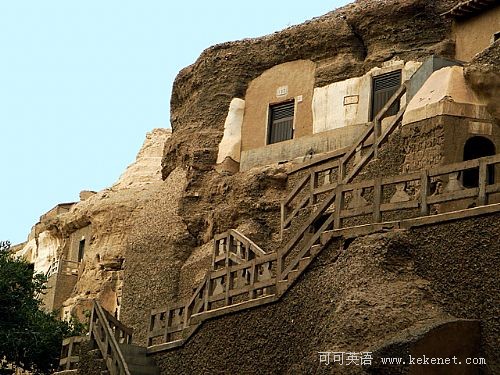The documentary not only shows many breathtaking paintings from Dunhuang caves that are not open to the public, it also sheds light on how those paintings were probably produced.
Narrator: [in Chinese] "To paint murals, you need very strong shoulders, for you have nothing to rest your elbow on. If your shoulders cannot endure keeping the same position for a long time, your brush will falter… The pigment used by those painters was made of minerals, such as cinnabar, mica and malachite."

Likewise, it also goes to great lengths to explain in plain terms and vivid detail how sculptors worked to produce a huge statue of the Buddha.
Zhou Bing believes that by providing details, the documentary zooms in on the otherwise general account of what happened in Dunhuang during a period of some 1,000 years.
As Susan Whitfield says, it would be hard to imagine the fancy lives people lived in Dunhuang hundreds of years ago had it not been for these paintings.
Susan Whitfield: "They were living in a cosmopolitan city. There were many things to buy, many luxuries, many entertainments, very good music, dance, good restaurants to eat at, very good food to be had, lovely silks to buy, new things coming from abroad. Here you buy goods from all over the world."
But that life has gone, turned to dust, along with the people who once lived it.
As the sea emerged as the easiest way to transport goods, the Silk Road gradually lost its use.
So did the many stops along the road, including Dunhuang, now a UNESCO World Heritage site.
Once an oasis located at a religious and cultural crossroads linking Europe, India, and the Far East, Dunhuang finally lost its glow and became the remote, tranquil little city it is now.
Director Zhou Bing tells me that after six years of shooting and production, he finally persuaded himself that maybe Dunhuang was never what we hoped it to be, that maybe it was never such a sensation.
Zhou Bing: [in Chinese] "Dunhuang never was a big place. I looked up the city annals, and found that its population was never more than 200,000. That makes it just a small town."
Yes, there were never many people there, but given the city's history of more than 1,000 years, no one can tell how many people left their footprints there.
The heritage of Dunhuang was built up by every one of those who came to Dunhuang at different times.
Time magnified the city's lost glory countless times over.
With his documentary, Zhou Bing brings the subtle textures of history to light, and thereby allows us to feel the touch of time.











